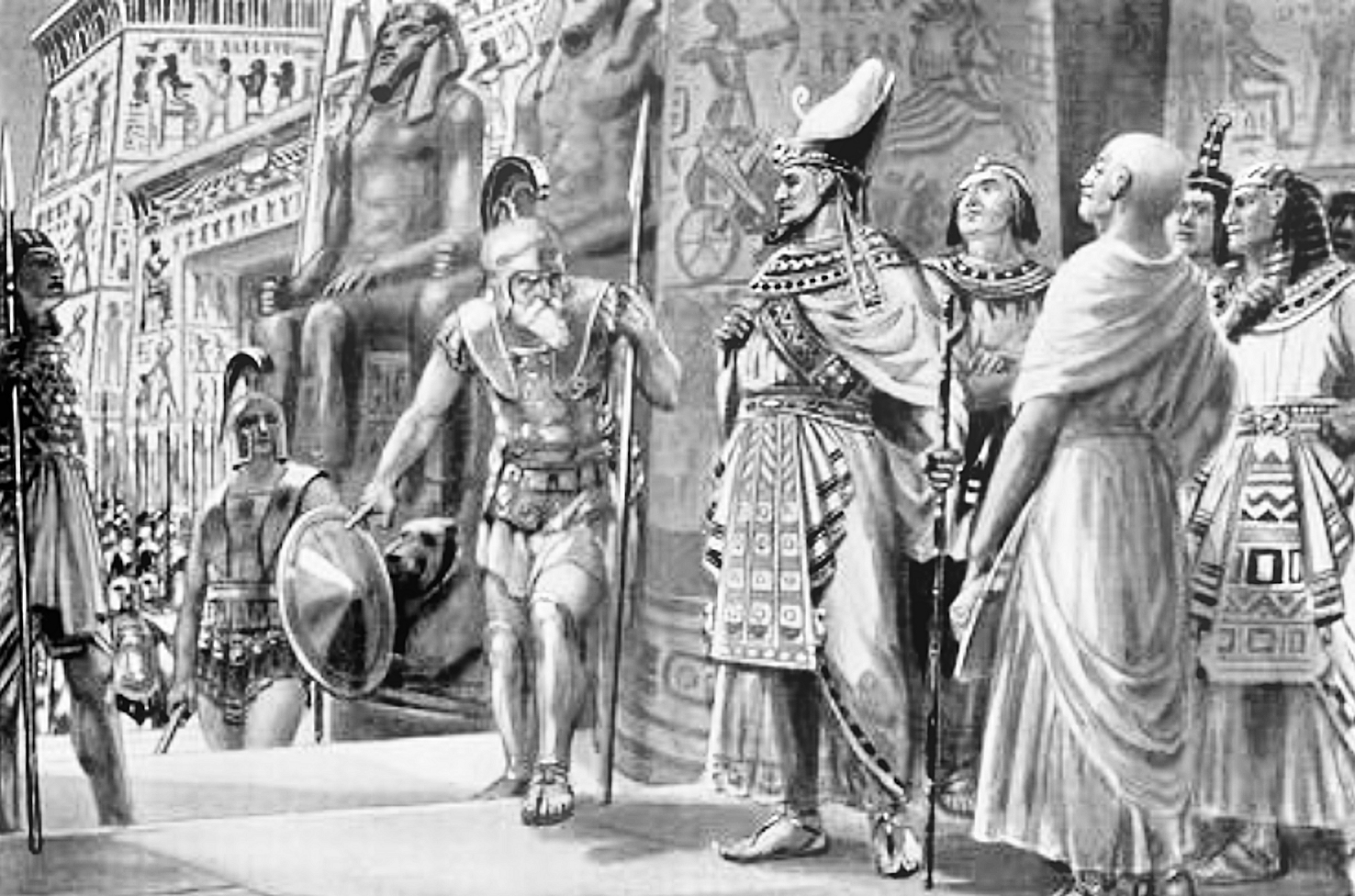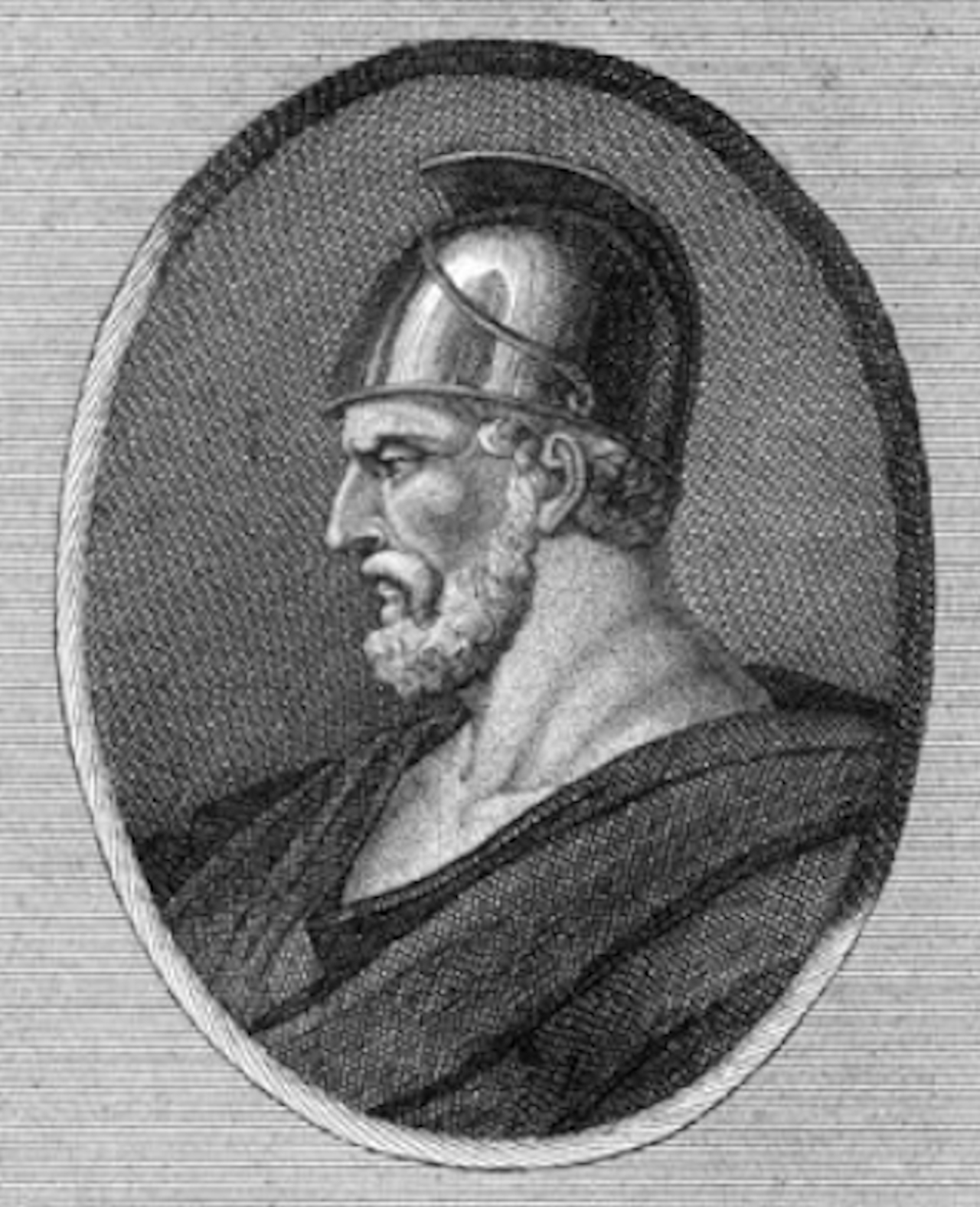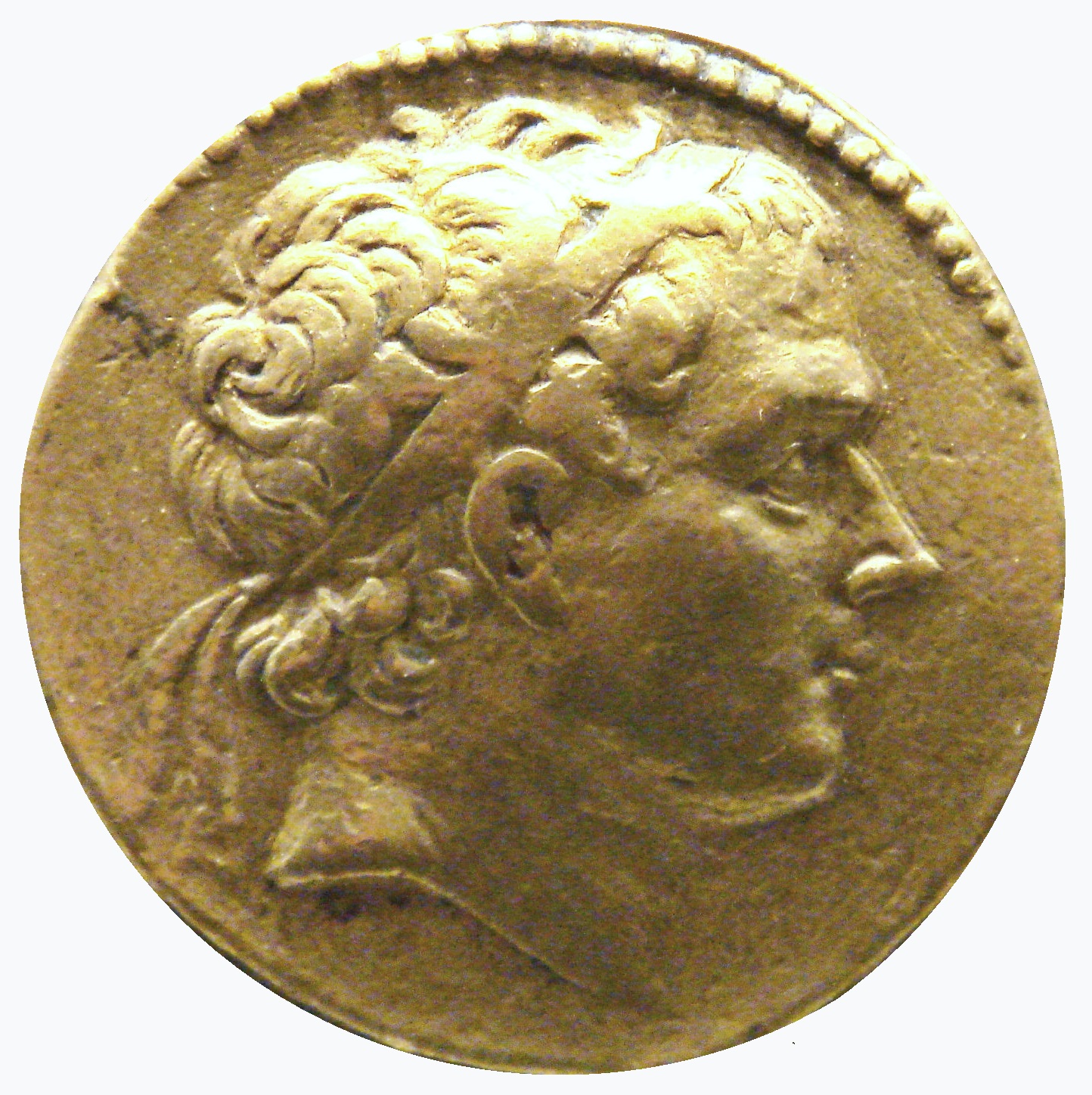|
Machimoi
The term ''máchimoi'' (, plural of μάχιμος, ''máchimos'', meaning "pugnacious") commonly refers to a broad category of ancient Egyptian low-ranked soldiers which rose during the Late Period of Egypt (664–332 BCE) and, more prominently, during the Ptolemaic dynasty (323–30 BCE). History Herodotus and the Late Period The earliest attestation of this term given to native Egyptian warriors came from Herodotus – who visited Egypt during the first Persian domination (Manetho's 27th Dynasty) – and since him this term has been usually translated simply as "warriors" or "fighting men". The same term was used by him, referring to Asiatic troops employed by the Persians. Herodotus provided some information about the Egyptian ''máchimoi'', claiming that they were literally a closed caste of warriors who were forbidden to practice other activities outside of combat and were provided twelve '' arourai'' of tax-free land as a reward for their services. Herodotus also recogniz ... [...More Info...] [...Related Items...] OR: [Wikipedia] [Google] [Baidu] |
Teos Of Egypt
Djedhor, better known as Teos () or Tachos (), was an ancient Egyptian pharaoh of the 30th Dynasty. Biography A son of his predecessor Nectanebo I, Teos was his co-regent for three years before ascending to the throne in 361–60 BCE. Expedition against Persians Nectanebo's success in the Nile Delta against the invading Persian armies in 374–73 BCE encouraged Teos to start to plan a military expedition into Palestine and Phoenicia, which were territories controlled by the Persians. Taking advantage of a moment of weakness for the Achaemenid Empire due to riots in some satrapies in Asia Minor, Teos sought assistance from both the octogenarian king Agesilaus II of Sparta and the Athenian general Chabrias, including a number of mercenaries and 200 triremes, from Greece. However, to finance such an expedition, Teos had to impose new taxes and to expropriate the goods of the temples, destroying the delicate balance artfully established by his father Nectanebo. This action ensur ... [...More Info...] [...Related Items...] OR: [Wikipedia] [Google] [Baidu] |
Nectanebo II
Nectanebo II (Egyptian language, Egyptian: ; ) was the last native ruler of ancient Egypt, as well as the third and last pharaoh of the Thirtieth Dynasty of Egypt, Thirtieth Dynasty, reigning from 358 to c.340 BC. During the reign of Nectanebo II, Egyptian artists developed a specific style that left a distinctive mark on the reliefs of the Ptolemaic Kingdom. Like his indirect predecessor Nectanebo I, Nectanebo II showed enthusiasm for many of the Cult (religious practice), cults of the gods within ancient Egyptian religion, and more than a hundred Egyptian sites bear evidence of his attention. For several years, Nectanebo II was successful in keeping Egypt safe from the Achaemenid Empire. However, he was betrayed by his former servant, Mentor of Rhodes, and ultimately defeated. The Persians occupied Memphis, Egypt, Memphis and then seized the rest of Egypt, incorporating the country into the Achaemenid Empire under Artaxerxes III. Nectanebo fled south. His subsequent fate is un ... [...More Info...] [...Related Items...] OR: [Wikipedia] [Google] [Baidu] |
Machimoi By Khruner
The term ''máchimoi'' (, plural of μάχιμος, ''máchimos'', meaning "pugnacious") commonly refers to a broad category of ancient Egyptian low-ranked soldiers which rose during the Late Period of Egypt (664–332 BCE) and, more prominently, during the Ptolemaic dynasty (323–30 BCE). History Herodotus and the Late Period The earliest attestation of this term given to native Egyptian warriors came from Herodotus – who visited Egypt during the first Persian domination (Manetho's 27th Dynasty) – and since him this term has been usually translated simply as "warriors" or "fighting men". The same term was used by him, referring to Asiatic troops employed by the Persians. Herodotus provided some information about the Egyptian ''máchimoi'', claiming that they were literally a closed caste of warriors who were forbidden to practice other activities outside of combat and were provided twelve '' arourai'' of tax-free land as a reward for their services. Herodotus also recogniz ... [...More Info...] [...Related Items...] OR: [Wikipedia] [Google] [Baidu] |
Battle Of Plataea
The Battle of Plataea was the final land battle during the second Persian invasion of Greece. It took place in 479BC near the city of Plataea in Boeotia, and was fought between an alliance of the Polis, Greek city-states (including Sparta, Classical Athens, Athens, Corinth and Megara), and the Achaemenid Empire of Xerxes I (allied with Greek states including Boeotia, Thessalia, and Macedonia (ancient kingdom), Macedon). At the preceding Battle of Salamis, the allied Greek navy had won an unlikely but decisive victory, preventing the conquest of the Peloponnesus region. Xerxes then retreated with much of his army, leaving his general Mardonius (nephew of Darius I), Mardonius to finish off the Greeks the following year. In the summer of 479BC, the Greeks assembled a huge army and marched out of the Peloponnesus. The Persians retreated to Boeotia and built a fortified camp near Plataea. The Greeks, however, refused to be drawn into the prime terrain for cavalry around the Persian ... [...More Info...] [...Related Items...] OR: [Wikipedia] [Google] [Baidu] |
Militia
A militia ( ) is a military or paramilitary force that comprises civilian members, as opposed to a professional standing army of regular, full-time military personnel. Militias may be raised in times of need to support regular troops or serve as a pool of available manpower for regular forces to draw from. When acting independently, militias are generally unable to hold ground against regular forces. Militias commonly support regular troops by skirmishing, holding fortifications, or conducting irregular warfare, instead of undertaking offensive campaigns by themselves. However, militias may also engage in defense activities to protect a community, its territory, property, and laws. For example, naval militias may comprise fishermen and other civilians which are organized and sanctioned by a state to enforce its maritime boundaries. Beginning in the late 20th century, some militias (in particular officially recognized and sanctioned militias of a government) act as profe ... [...More Info...] [...Related Items...] OR: [Wikipedia] [Google] [Baidu] |
Ptolemy V Epiphanes
Ptolemy V Epiphanes Eucharistus (, ''Ptolemaĩos Epiphanḗs Eukháristos'' "Ptolemy the Manifest, the Beneficent"; 9 October 210–September 180 BC) was the Pharaoh, King of Ptolemaic Egypt from July or August 204 BC until his death in 180 BC. Ptolemy V, the son of Ptolemy IV and Arsinoe III, inherited the throne at the age of five when his parents died in suspicious circumstances. The new regent, Agathocles of Egypt, Agathocles, was widely reviled and was toppled by a revolution in 202 BC, but the series of regents who followed proved incompetent and the kingdom was paralysed. The Seleucid king Antiochus III and the Antigonid king Philip V of Macedon, Philip V took advantage of the kingdom's weakness to begin the Fifth Syrian War (202–196 BC), in which the Ptolemies lost all their territories in Asia Minor and the Levant, as well as most of their influence in the Aegean Sea. Simultaneously, Ptolemy V faced a widespread Egyptian revolt (206–185 BC) led by the self-proclaimed ... [...More Info...] [...Related Items...] OR: [Wikipedia] [Google] [Baidu] |
Ptolemy II Philadelphus
Ptolemy II Philadelphus (, ''Ptolemaîos Philádelphos'', "Ptolemy, sibling-lover"; 309 – 28 January 246 BC) was the pharaoh of Ptolemaic Egypt from 284 to 246 BC. He was the son of Ptolemy I, the Macedonian Greek general of Alexander the Great who founded the Ptolemaic Kingdom after the death of Alexander, and Queen Berenice I, originally from Macedon. During Ptolemy II's reign, the material and literary splendour of the Alexandrian court was at its height. He promoted the Museum and Library of Alexandria. In addition to Egypt, Ptolemy's empire encompassed much of the Aegean and Levant. He pursued an aggressive and expansionist foreign policy with mixed success. From 275 to 271 BC, he led the Ptolemaic Kingdom against the rival Seleucid Empire in the First Syrian War and extended Ptolemaic power into Cilicia and Caria, but lost control of Cyrenaica after the defection of his half-brother Magas. In the Chremonidean War (–261 BC), Ptolemy confronted Antigonid Maced ... [...More Info...] [...Related Items...] OR: [Wikipedia] [Google] [Baidu] |
Heinz Heinen
Heinz Heinen (September 14, 1941–June 21, 2013) was a German-Belgian historian of classical antiquity. He was a professor of ancient history at the University of Trier from 1971 to 2006. Heinen's main research areas were Hellenistic Egypt and Roman Egypt, Augusta Treverorum in the Roman era (the predecessor to modern Trier), Crimea in the Roman era and the wider northern Black Sea region, Soviet and Russian historiography and views of antiquity, and slavery in antiquity (and in ancient Rome). Biography Heinz Heinen was born in Sankt Vith on September 14, 1941. At the time, it was part of Nazi Germany, as the largely German-speaking Eupen-Malmedy region of Belgium was annexed by Germany during the occupation of Belgium, although the region was returned to Belgium in 1945 after Germany's defeat. He grew up in Sankt Vith, but moved to Leuven in 1959, where he studied ancient history and classical philology at the Katholieke Universiteit Leuven (Catholic University of Leu ... [...More Info...] [...Related Items...] OR: [Wikipedia] [Google] [Baidu] |
Ptolemies
The Ptolemaic dynasty (; , ''Ptolemaioi''), also known as the Lagid dynasty (, ''Lagidai''; after Ptolemy I's father, Lagus), was a Macedonian Greek royal house which ruled the Ptolemaic Kingdom in Ancient Egypt during the Hellenistic period. Reigning for 275 years, the Ptolemaic was the longest and last dynasty of ancient Egypt from 305 BC until its incorporation into the Roman Republic in 30 BC. Ptolemy, a general and one of the '' somatophylakes'' (bodyguard companions) of Alexander the Great, was appointed satrap of Egypt after Alexander's death in 323 BC. In 305 BC he declared himself Pharaoh Ptolemy I, later known as ''Sōter'' "Saviour". The Egyptians soon accepted the Ptolemies as the successors to the pharaohs of independent Egypt. The new dynasty showed respect to local traditions and adopted the Egyptian titles and iconography, while also preserving their own Greek language and culture. The Ptolemaic period was marked by the intense interactions and blending ... [...More Info...] [...Related Items...] OR: [Wikipedia] [Google] [Baidu] |
Battle Of Raphia
The Battle of Raphia was fought on 22 June 217 BC near modern Rafah between the forces of Ptolemy IV Philopator, king and pharaoh of Ptolemaic Egypt and Antiochus III the Great of the Seleucid Empire during the Syrian Wars. It was one of the largest battles of the Hellenistic kingdoms and of the ancient world, and determined the sovereignty of Coele-Syria. Prelude The two largest Hellenistic kingdoms in the 3rd century BC, Ptolemaic Egypt and the Seleucid Empire, repeatedly fought for control of Syria in a series of conflicts known as the Syrian Wars. The Fourth Syrian War began in 219 BC, during which time Ptolemaic Egypt was ruled by Ptolemy IV, and the Seleucid Empire was ruled by Antiochus III the Great. In 217 BC, both armies were on campaign through Syria. The Seleucid and Ptolemaic armies met near the small Syrian town of Rafah. Antiochus initially set up his camp at a distance of 10 (about 2 km) and then only 5 stades (about 1 km) from his adversary's. The ba ... [...More Info...] [...Related Items...] OR: [Wikipedia] [Google] [Baidu] |
Rosetta Stone
The Rosetta Stone is a stele of granodiorite inscribed with three versions of a Rosetta Stone decree, decree issued in 196 BC during the Ptolemaic dynasty of ancient Egypt, Egypt, on behalf of King Ptolemy V Epiphanes. The top and middle texts are in Egyptian language, Ancient Egyptian using Egyptian hieroglyphs, hieroglyphic and Demotic (Egyptian), Demotic scripts, respectively, while the bottom is in Ancient Greek. The decree has only minor differences across the three versions, making the Rosetta Stone key to decipherment of ancient Egyptian scripts, deciphering the Egyptian scripts. The stone was carved during the Hellenistic period and is believed to have originally been displayed within a temple, possibly at Sais, Egypt, Sais. It was probably moved in late antiquity or during the Mamluk Sultanate (Cairo), Mamluk period, and was eventually used as building material in the construction of Fort Julien near the town of Rashid (Rosetta) in the Nile Delta. It was found there in ... [...More Info...] [...Related Items...] OR: [Wikipedia] [Google] [Baidu] |
Thirty-first Dynasty Of Egypt
The Thirty-first Dynasty of Egypt (notated Dynasty XXXI, alternatively 31st Dynasty or Dynasty 31), also known as the Second Egyptian Satrapy, was effectively a satrapy of the Achaemenid Empire between 343 BC to 332 BC. It was founded by Artaxerxes III, the King of Persia, after his reconquest of Egypt and subsequent crowning as Pharaoh of Egypt, and was disestablished upon the conquest of Egypt by Alexander the Great. The period of the 31st Dynasty was the second occasion in which Persian pharaohs ruled Egypt, hence the term "Second Egyptian Satrapy". Before the 31st Dynasty was founded, Egypt had enjoyed a brief period of independence, during which three indigenous dynasties reigned (the 28th, 29th, and 30th dynasties). The period before this is referred to as the "First Egyptian Satrapy" or the 27th Dynasty (525–404 BC). History First Egyptian Campaign In around 351 BC, Artaxerxes embarked on a campaign to recover Egypt, which had revolted under his father, Artaxerxes II ... [...More Info...] [...Related Items...] OR: [Wikipedia] [Google] [Baidu] |








